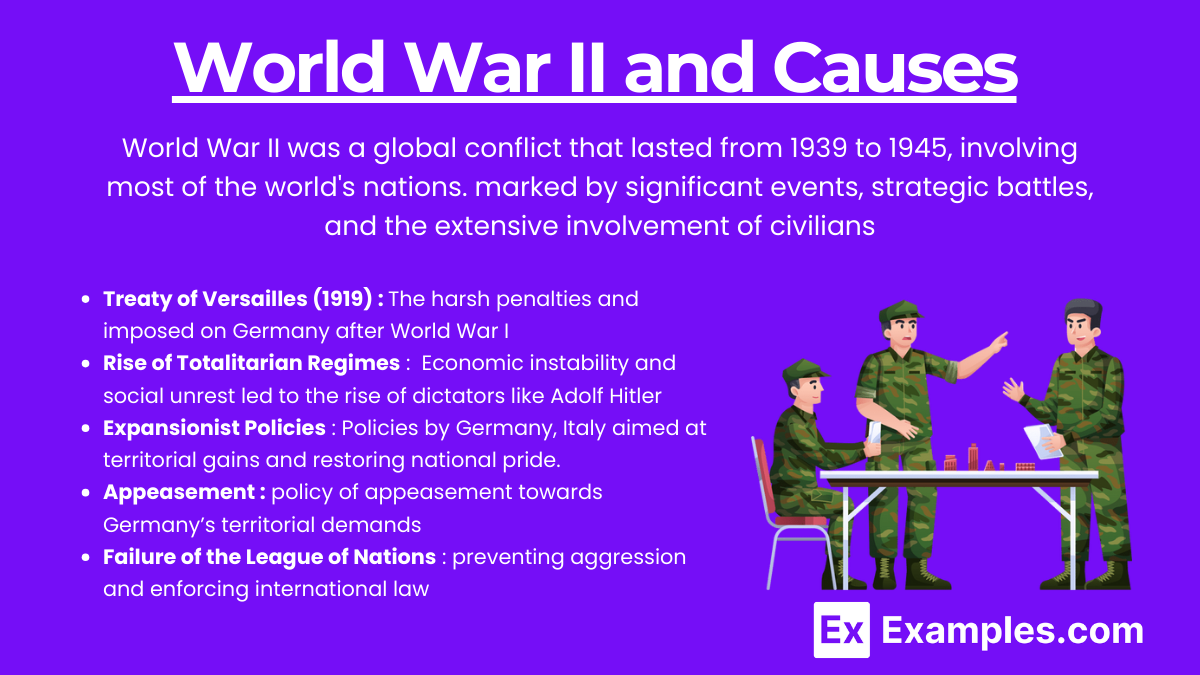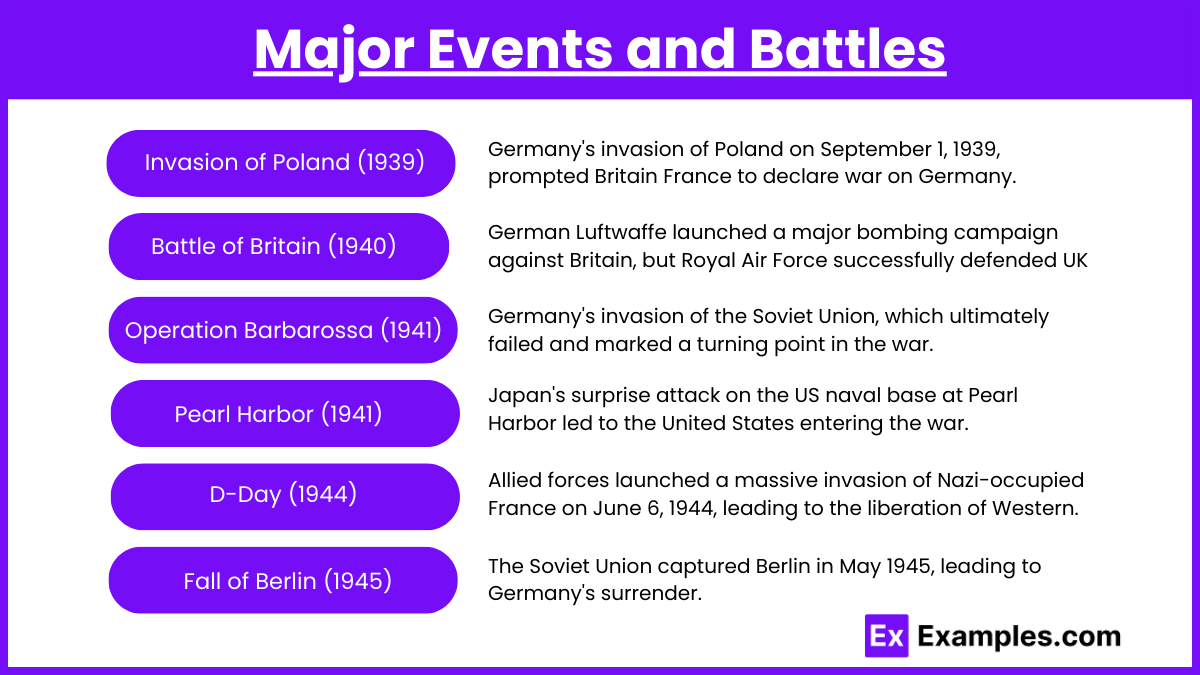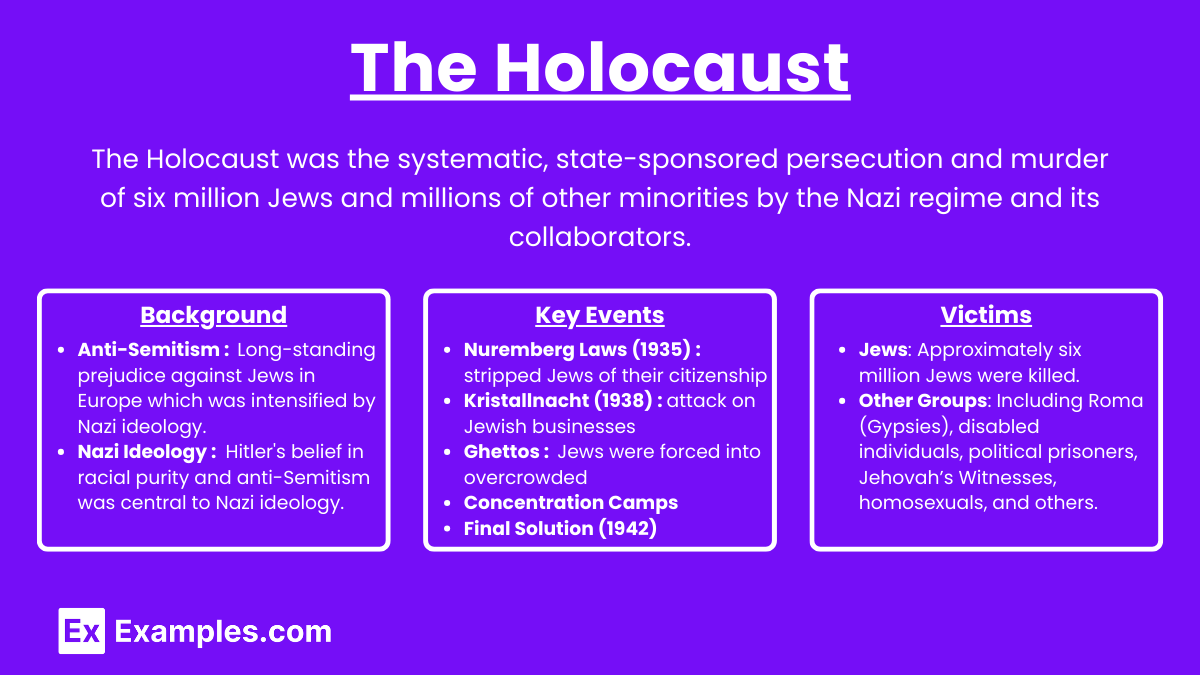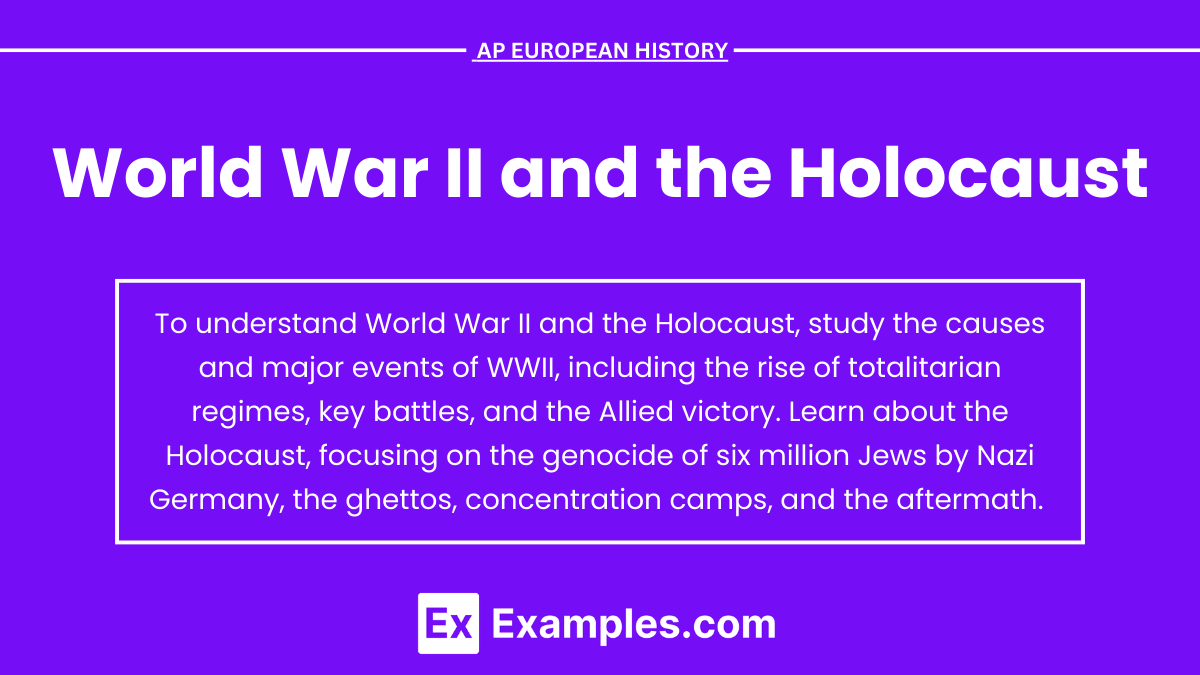World War II and the Holocaust were pivotal events that profoundly impacted the 20th century, shaping modern history and international relations. This topic is crucial for AP European History as it explores the causes, major battles, and key figures of the war, alongside the horrific genocide orchestrated by the Nazi regime. Understanding these events helps students grasp the complexities of European history and the lasting consequences of totalitarianism, war, and human rights violations.
Learning Objectives
By studying "World War II and the Holocaust" for the AP European History exam, you should learn the causes and consequences of the war, key events and battles, and the roles of major figures. Understand the geopolitical shifts, the rise of totalitarian regimes, and the failure of appeasement. Gain insight into the Holocaust, including its origins, implementation, and impact on Jewish and other targeted communities. Analyze the human, economic, and political aftermath, including the establishment of the United Nations and the onset of the Cold War.
World War II and Causes
World War II was a global conflict that lasted from 1939 to 1945, involving most of the world's nations. It was marked by significant events, strategic battles, and the extensive involvement of civilians, leading to widespread devastation and reshaping the political landscape of the 20th century.
Causes of World War II

Treaty of Versailles (1919): The harsh penalties and reparations imposed on Germany after World War I created deep resentment and economic hardship.
Rise of Totalitarian Regimes: Economic instability and social unrest led to the rise of dictators like Adolf Hitler in Germany, Benito Mussolini in Italy, and militaristic leadership in Japan.
Expansionist Policies: Aggressive expansionist policies by Germany, Italy, and Japan aimed at territorial gains and restoring national pride.
Appeasement: European powers, particularly Britain and France, initially adopted a policy of appeasement towards Germany’s territorial demands, which emboldened Hitler.
Failure of the League of Nations: The League of Nations was ineffective in preventing aggression and enforcing international law.
Major Events and Battles

Invasion of Poland (1939): Germany's invasion of Poland on September 1, 1939, prompted Britain and France to declare war on Germany.
Battle of Britain (1940): The German Luftwaffe launched a major bombing campaign against Britain, but the Royal Air Force successfully defended the UK.
Operation Barbarossa (1941): Germany's invasion of the Soviet Union, which ultimately failed and marked a turning point in the war.
Pearl Harbor (1941): Japan's surprise attack on the US naval base at Pearl Harbor led to the United States entering the war.
D-Day (1944): Allied forces launched a massive invasion of Nazi-occupied France on June 6, 1944, leading to the liberation of Western Europe.
Fall of Berlin (1945): The Soviet Union captured Berlin in May 1945, leading to Germany's surrender.
Key Figures
Adolf Hitler: The dictator of Nazi Germany, responsible for initiating the war and the Holocaust.
Winston Churchill: The British Prime Minister who led Britain through the war.
Franklin D. Roosevelt: The US President during most of the war.
Joseph Stalin: The leader of the Soviet Union.
Benito Mussolini: The fascist leader of Italy.
Consequences of World War II
Human Casualties: Approximately 70-85 million people died, including civilian and military casualties.
Economic Impact: Massive destruction of infrastructure and economies, particularly in Europe and Asia.
United Nations: Established in 1945 to prevent future conflicts and promote international cooperation.
Cold War: Emergence of the United States and the Soviet Union as superpowers, leading to a prolonged period of geopolitical tension.
Decolonization: Accelerated movements for independence in Asia and Africa.
The Holocaust

The Holocaust was the systematic, state-sponsored persecution and murder of six million Jews and millions of other minorities by the Nazi regime and its collaborators.
Background
Anti-Semitism: Long-standing prejudice against Jews in Europe, which was intensified by Nazi ideology.
Nazi Ideology: Hitler's belief in racial purity and anti-Semitism was central to Nazi ideology.
Key Events
Nuremberg Laws (1935): Legislation that stripped Jews of their citizenship and civil rights.
Kristallnacht (1938): A coordinated attack on Jewish businesses, homes, and synagogues across Germany and Austria.
Ghettos: Jews were forced into overcrowded and unsanitary ghettos in major cities.
Concentration Camps: Establishment of camps like Auschwitz, where Jews and other targeted groups were subjected to forced labor, medical experiments, and mass executions.
Final Solution (1942): The Nazi plan for the genocide of the Jews, implemented through extermination camps.
Victims
Jews: Approximately six million Jews were killed.
Other Groups: Including Roma (Gypsies), disabled individuals, political prisoners, Jehovah’s Witnesses, homosexuals, and others.
Aftermath
Nuremberg Trials (1945-1946): War crime trials held to bring Nazi leaders to justice.
Survivor Testimonies: Documentation and accounts from survivors have been crucial in understanding the Holocaust.
Holocaust Memorials and Education: Efforts to remember the victims and educate future generations about the dangers of hatred and intolerance.
World War II and the Holocaust were catastrophic events that had profound impacts on the 20th century and beyond. Understanding these events is crucial for comprehending modern history, international relations, and the importance of preventing such atrocities in the future.
Examples
Example 1: The Warsaw Ghetto Uprising (1943)
The Warsaw Ghetto Uprising was a significant act of Jewish resistance against Nazi efforts to transport the remaining ghetto population to extermination camps. Despite being heavily outnumbered and under-equipped, the Jewish fighters held off the Nazis for nearly a month.
Example 2. The Nuremberg Trials (1945-1946)
After World War II ended, the Allied forces conducted the Nuremberg Trials to bring Nazi war criminals to justice. High-ranking officials were prosecuted for crimes against humanity, war crimes, and genocide, setting a precedent for international law.
Example 3. The Liberation of Auschwitz (1945)
The Auschwitz concentration camp, one of the most notorious extermination camps, was liberated by Soviet troops on January 27, 1945. The liberation revealed the extent of the Holocaust's atrocities, with millions of Jews, Poles, Roma, and others having been murdered.
Example 4. Kristallnacht (1938)
Also known as the "Night of Broken Glass," Kristallnacht was a coordinated attack on Jewish people and their properties in Nazi Germany. Synagogues were burned, Jewish businesses were destroyed, and thousands of Jews were arrested and sent to concentration camps, marking a significant escalation in Nazi anti-Semitic policies.
Example 5. The Diary of Anne Frank
Anne Frank's diary, written while she and her family hid from the Nazis in Amsterdam, provides a poignant, personal account of the fear, hope, and resilience experienced by Jews during the Holocaust. Her diary has become one of the most widely read books about the Holocaust and has educated millions about the human impact of these events.
Multiple Choice Questions
Question 1
What was the primary goal of the Holocaust orchestrated by the Nazi regime during World War II?
A. To promote industrialization in Germany
B. To exterminate the Jewish population and other groups deemed undesirable
C. To expand German territory into neighboring countries
D. To form alliances with other European nations
Answer: B. To exterminate the Jewish population and other groups deemed undesirable
Explanation: The Holocaust was a genocide carried out by Nazi Germany, led by Adolf Hitler, with the goal of annihilating the Jewish people. This systematic extermination also targeted other groups, including Roma (Gypsies), disabled individuals, Polish and Soviet civilians, political dissidents, and others considered "racially inferior" or politically opposed to Nazi ideology. The Holocaust resulted in the deaths of six million Jews and millions of others, marking one of the most horrific atrocities in human history.
Question 2
Which event is widely regarded as the beginning of World War II?
A. The bombing of Pearl Harbor
B. The signing of the Treaty of Versailles
C. The German invasion of Poland
D. The dropping of the atomic bomb on Hiroshima
Answer: C. The German invasion of Poland
Explanation: World War II began on September 1, 1939, when Germany invaded Poland. This invasion prompted Britain and France to declare war on Germany two days later. The invasion of Poland demonstrated Germany's aggressive expansionist policies and led to a conflict that eventually involved many nations across the world. The invasion was characterized by the use of blitzkrieg tactics, which combined fast-moving infantry, tanks, and airpower to quickly overwhelm the Polish defenses.
Question 3
What was the significance of the Nuremberg Trials following World War II?
A. They marked the beginning of the Cold War
B. They established a precedent for international law and accountability for war crimes
C. They resulted in the reconstruction of European cities
D. They led to the creation of the United Nations
Answer: B. They established a precedent for international law and accountability for war crimes
Explanation: The Nuremberg Trials were a series of military tribunals held after World War II to prosecute prominent leaders of Nazi Germany for crimes against humanity, war crimes, and other offenses. Conducted from 1945 to 1946, these trials were significant because they set a precedent for international law, holding individuals accountable for actions that violated human rights on a massive scale. They underscored the principle that individuals, not just states, could be held liable for war crimes and atrocities, paving the way for future international justice mechanisms like the International Criminal Court (ICC).


